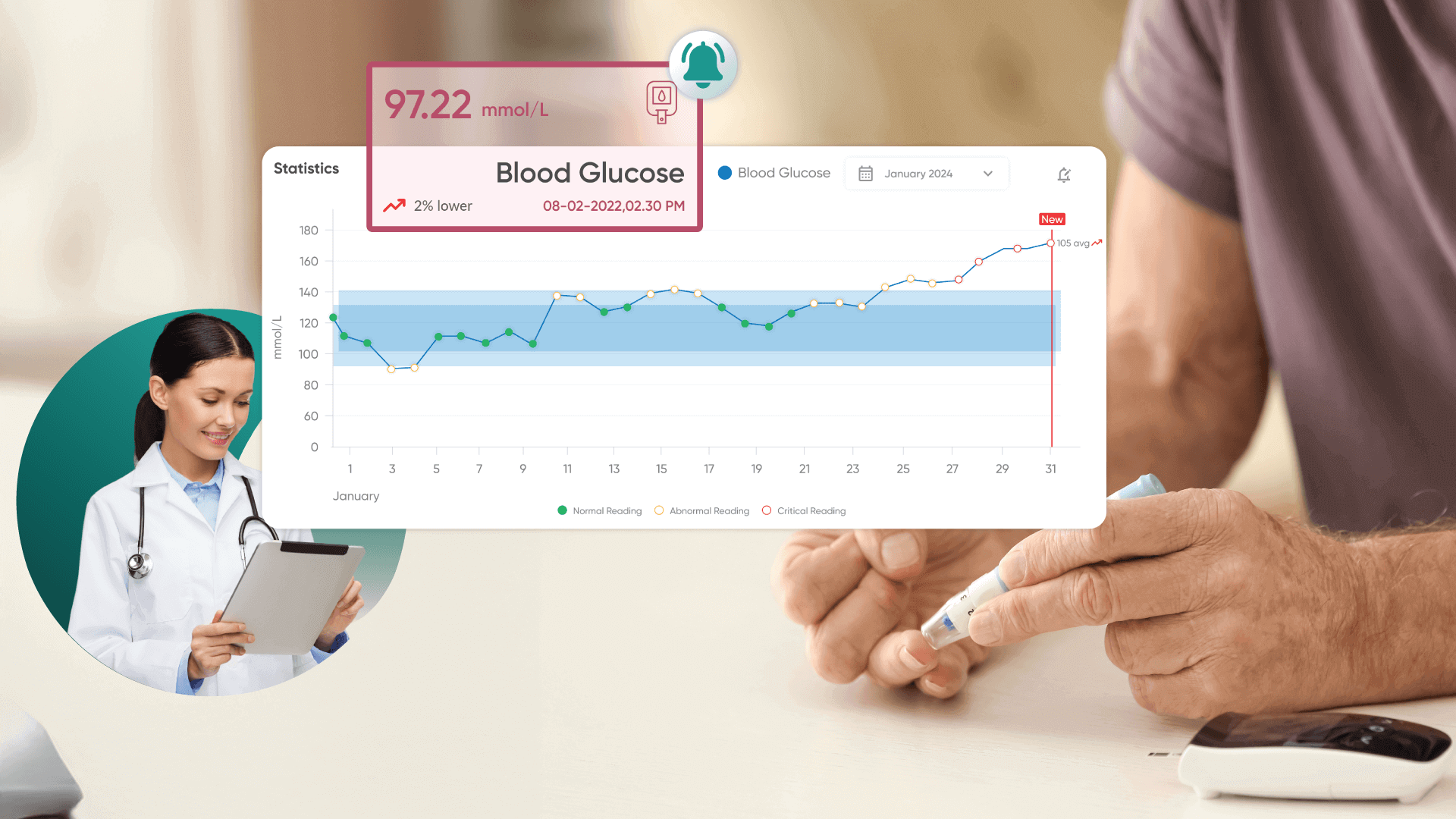Client Background
The client is a prominent healthcare provider in the United States, providing services to patients with diabetes and other chronic conditions. The client mainly focuses on delivering high-quality care to the patients with their medical expertise and the use of advanced technologies. The client was managing more than 200 active patients using the existing CCM software.
Business challenges
The client was using Chronic Care Management (CCM) software to manage patients and deliver quality care services. While using the software, the client identified certain missing capabilities that obstruct care providers from delivering more patient-centered care. The lack of these capabilities within the software prevented the achievement of expected health outcomes, leading to a decrease in patient satisfaction. Ultimately, this resulted in a reduction in revenue generated for the practice.
1. Lack of Customizable Diabetes Care Plans
The client faced challenges in delivering more patient-centered care as the software lacked the functionality of customization of the care plan. Manual creation of a care plan for each patient is time-consuming and requires efforts that reduce the efficiency of practice and ultimately hamper the quality of care.
2. Limited alerts for blood glucose changes
The client was facing challenges in monitoring the real-time blood glucose levels of the patient. The absence of generated alerts for abnormal changes in patient health and unaware providers leads to an increased risk of health complications as care providers aren’t able to intervene at the right time.
3. Inefficient Task Management for Clinical Reviews
Manual assignment of tasks and tracking their progress was time-consuming for the client. That resulted in delays and inconsistencies in patient care management.
4. Insufficient Patient Education Resources
The client lacked resources that educate and empower patients about diabetes management. The patient also struggled to understand diabetes and their impacts without educational resources.
Solution
To address the business challenge and understand the client's requirements, our team of business analysts and subject matter experts conducted multiple interaction calls and demonstrations with the client. Following the client's approval, our team successfully implemented the eCareMD CCM software in the client's practice. Since the implementation, the client has reported enhanced patient satisfaction and increased revenue for the practice.
Solution Highlights
The eCareMD software comprises various features that ensure high-quality patient-centered care and streamline the workflow. Some of the key features are:
1. Customizable Diabetes Care Plans
To ensure better health outcomes and deliver more patient-centered care, the eCareMD software provided care providers with access to create and update the care plans as per the patient's health status. These care plans can be further stored within the software library.
While configuring a care plan for the patient, the care provider can select the more appropriate goals for the patient, potential barriers, symptoms, support, allergies, medications, and vitals to track, like blood glucose, heart rate, etc., and expected outcomes.
This configured care plan, as per the patient’s health requirements, helped in attaining better health outcomes.
2. Alerts Generated for Changes in Sugar Level

The eCareMD software generates alerts for changes in a patient's blood glucose levels. If the patient's blood glucose level exceeds the threshold levels, an alert is triggered and can be sent to the care provider. Upon receiving the alert, care providers could initiate necessary interventions and engage with the patient for preventive care.
These alerts facilitate early detection of diseases, reducing health complications as timely actions are taken over the patient's profile.
3. Scheduled Periodic Reviews
With the eCareMD software, care providers can assign tasks to other care team members for daily, weekly, and monthly clinical reviews, daily chart assessments, prescription refills, and care plan reconciliation. Care providers and physicians conduct the necessary reviews and update notes based on the assigned tasks.
Following the requirements, care providers provide recommendations to patients regarding lifestyle, medication, diet, and exercise changes. These suggestions help patients adhere to the necessary guidelines, contributing to the achievement of expected health outcomes.
4. Empowering Patients through Educational Material
The eCareMD software enabled care providers to create, store, and send educational material to patients. This educational material guides patients about lifestyle changes, diet recommendations, and exercise changes. Also, it guides the patient about the importance and benefits of adhering to the treatment plan.
Value Delivered
1. Improved Health Outcomes for the Patient
Features like customizable care plans and alerts generated help in delivering more patient-centered care that results in improved health outcomes for patients.
2. Increased Patient Engagement and Treatment Adherence
As the care providers take health assessments of patients at regular intervals and send educational materials to patients, it keeps patients engaged with treatment plans and increases their treatment adherence.
3. Informed Decision Making
Based on the periodic reviews, care providers can access the health data and understand the patient’s health conditions. These inputs help care providers make informed decisions on patient health and make the necessary modifications in a treatment plan that results in improved patient health outcomes.
4. Increased Revenue for Practices
The eCareMD software helps deliver high-quality care services and keep patients engaged throughout the program. It enables care providers to log the maximum time for activities performed over patient profiles for a longer duration, resulting in increased revenue for practices.

